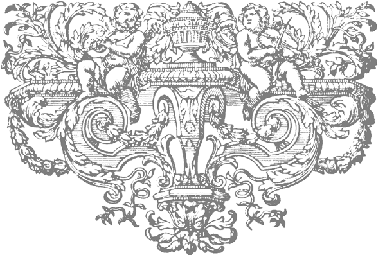Franco-Flemish double-manual harpsichord,
![]()
The Tomasini decoration of the outside of the batten on the outside of the main lid
The lid batten seen above is that attached to the main part of the outside of the lid and would normally have the lid flap hinges attached to it. But these were removed when this photograph was taken. The batten has been partly cleaned at the left-hand end. Although almost not discernible here, the style of the painting on this batten is similar to that of the sides of the keywell and the top of the jackrail of the Franco-Flemish harpsichord. It is also in the style of the stand of the Tomasini harpsichord in the Musikinstrumentenmuseum in Berlin (as discussed in the section on the modern history of the Franco-Flemish instrument). Because the additional painting was carried out at the same time as the instrument was given the thick coat of varnish, and probably even using this varnish as the medium for the paint, it is now very difficult, if not impossible, to remove the varnish without removing the painting at the same time since they are both removed together with the same solvents. Here a (mostly unsuccessful) attempt has been made to remove the varnish at the left-hand (bass) end of the batten without, at the same time, removing the painted decoration. The batten on the lid flap can be seen below at the left, and is in a similar style and in a similar state to the batten shown here.
This is a large image of the whole of the lid flap (left) and of the main lid section (right) after cleaning, but before restoration. At this stage of the cleaning process the batten on the lid flap at the far left-hand end had been cleaned, all except for the lower section. This part of the decoration is eighteenth century, and can be cleaned easily because the overlying varnish and the decoration are carried out two in two clearly different media so that the varnish can be removed from the gold and the painted decoration through a judicious choice of solvents and using differential techniques. But the exercise shows clearly the enormous improvement made by removing the varnish.
The cleaned section is satisfactory and matches the rest of the decoration and gilding. On the other hand the lid battens on the join between the lid flap and main lid show the problems, seen in the detail of the main lid moulding at the top of this page, of trying to remove the varnish without removing the Tomasini decorations underneath the varnish. To leave these two battens without cleaning them would be aesthetically unsatisfactory because of the visual interruption that they would make to the flow of the painting across the lid. They are dark and gloomy compared to the lightness and splendour of the rest of the decoration.
I have never seen a French harpsichord with decorations on the two central lid battens as here. This is probably because the lid hinges are attached here and would leave little room for the decoration. Indeed in this case the lid hinges cover and obscure most of the Tomasini decoration. The Tomasini decorator here, as in the sides of the keywell discussed elsewhere, has not even taken the position and area covered by the hinges into account when painting the decoration. Because of the hinges it is simply inappropriate to decorate these battens, and this explains why they are never decorated on historical instruments
These two battens are normally left in a plain colour (or gilt as here) and only the moulded edge of the batten is in gold. Historically, the Tomasini decoration is therefore totally out of place in this position on this instrument, a fact that seems not to have been realised by Tomasini's over-zealous decorator!
Return to the section on the description of the Franco-Flemish harpsichord
